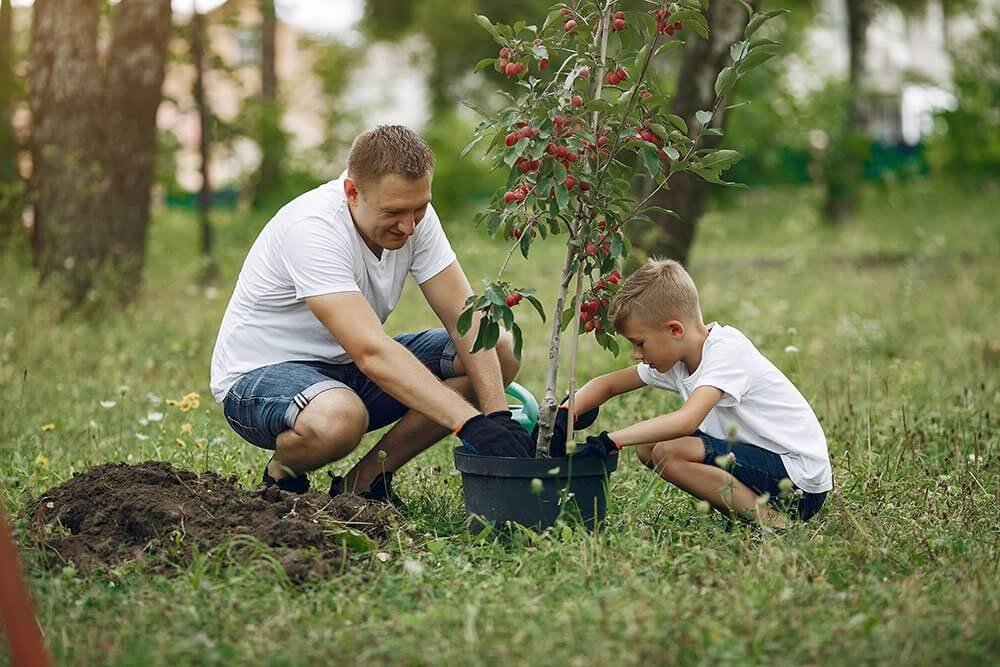Healthy trees can enhance your property’s appearance, increase its value, and even help reduce energy expenses by offering cold barriers and shade on hot days. Trees also play a vital role in improving air quality, making them essential for the environment.
Proper care is necessary to ensure your newly planted trees grow strong and contribute to these benefits. In this guide, we’ll discuss how to care for newly planted trees to guarantee their health and beauty for years to come.
General Tips for Newly Planted Tree Care
Follow these tips to set your newly planted trees and shrubs on the path to success.
Watering the Root Ball
One critical aspect of caring for newly planted trees is watering the root ball. It is essential for the tree’s development and long-term survival. Ensure the root ball remains well-watered but not soaked. A garden hose or watering bag can help you control the water flow and avoid under or over-watering the root ball.
Avoid Watering Trunks and Leaves
While the root ball needs watering, it’s essential not to water the trunks and leaves, as doing so may negatively affect the tree’s health.
Establish a Watering Schedule
Generally, young trees should be watered every 2-3 days, receiving 10-15 gallons weekly. Larger trees with over 2-inch trunk diameter at chest height require 8-10 gallons of water per inch of trunk diameter.
Monitor Soil Conditions
Regularly checking the soil is crucial for young tree care. The soil’s health and condition directly affect the tree’s growth and well-being. Examine the soil beneath the canopy and feel its moisture. Water the soil if it feels barely damp or dry.
Inspect the Leaves
Dry or shriveled leaves indicate that the tree is underwatered. Even though you shouldn’t water the leaves, checking their condition provides valuable information.
Use Mulch Wisely
Mulch can help retain moisture, control weeds, and regulate soil temperature. However, excessive mulch can create an environment conducive to pests, diseases, and fungi.
Caring for Young Trees in Hot Climates
Caring for young trees in hot climates requires additional considerations. Here are some tips for handling the heat:
Increase Watering: New trees should receive 20-30 gallons of water per week instead of the standard 10-15 gallons in hot weather.
Set Watering Times: Watering trees simultaneously each day offers consistency and ensures they receive the optimal amount of water. Water early in the morning or after sunset to minimize evaporation.
Prune Mindfully: Pruning trees is typically safe from mid-August to mid-July, but avoid doing so during extreme heat, as it may deplete the tree’s moisture reserves, leading to its demise.
These general tips serve as a foundation for caring for young trees, regardless of unique climates or tree species. By following this guide, you can set your newly planted trees on a path to thriving and contributing to a healthier environment.

